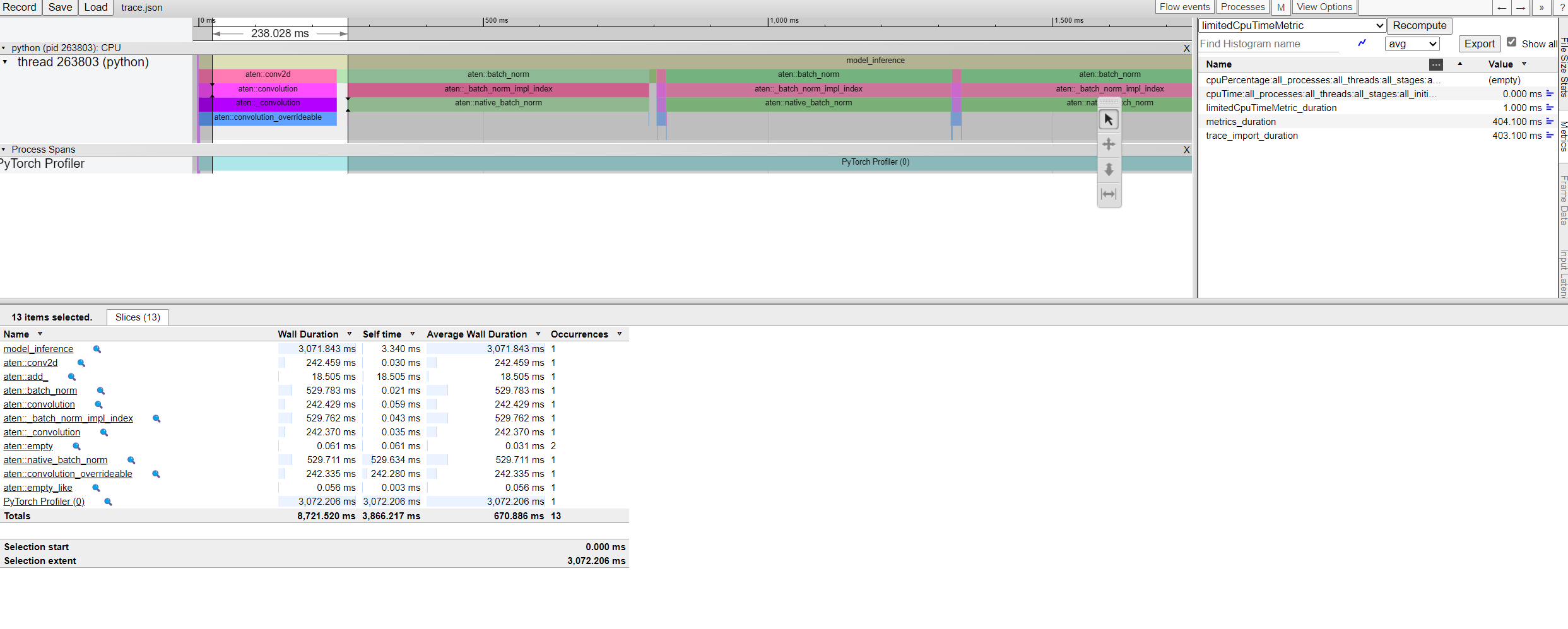In the realm of deep learning, model performance is paramount. Whether you’re working on image classification, object detection, or any other computer vision task, the efficiency of your model can make or break your application. PyTorch Profiler is an invaluable tool for developers looking to optimize their models. It provides detailed insights into the time and memory consumption of model operations during execution. In this article, we’ll explore how to use PyTorch Profiler with a ResNet model to identify and address performance bottlenecks.

Setting Up the Environment: Before diving into profiling, ensure that PyTorch is installed in your environment. If not, you can easily install it using pip with the following command:
1
| pip install torch torchvision
|
Once PyTorch is installed, you’re ready to start profiling your model.
Profiling a ResNet Model:
Step 1. Importing Necessary Modules Begin by importing the required modules from PyTorch and torchvision:
1
2
3
| import torch
import torchvision.models as models
from torch.profiler import profile, record_function, ProfilerActivity
|
Step 2. Loading the Model Load a pre-trained ResNet model, such as ResNet-18, from the torchvision library:
1
| model = models.resnet18(pretrained=True)
|
1
| input = torch.randn(1, 3, 224, 224)
|
1
2
3
| device = torch.device("cuda" if torch.cuda.is_available() else "cpu")
model.to(device)
input = input.to(device)
|
Step 5. Switching to Evaluation Mode Ensure the model is in evaluation mode to disable training-specific behaviors:
Step 6. Profiling the Model Use the PyTorch Profiler within a context manager, specifying the activities to profile (CPU and CUDA) and enabling tensor shape recording:
1
2
3
| with profile(activities=[ProfilerActivity.CPU, ProfilerActivity.CUDA], record_shapes=True) as prof:
with record_function("model_inference"):
model(input)
|
Step 7. Analyzing the Results After running the model inference, print the profiler output, focusing on the operations that consume the most CPU time:
1
| print(prof.key_averages().table(sort_by="cpu_time_total", row_limit=10))
|
1
2
3
4
5
6
7
8
9
10
11
12
13
14
15
16
17
18
| STAGE:2024-04-04 05:57:18 263803:263803 ActivityProfilerController.cpp:311] Completed Stage: Warm Up
STAGE:2024-04-04 05:57:21 263803:263803 ActivityProfilerController.cpp:317] Completed Stage: Collection
STAGE:2024-04-04 05:57:21 263803:263803 ActivityProfilerController.cpp:321] Completed Stage: Post Processing
---------------------------------- ------------ ------------ ------------ ------------ ------------ ------------
Name Self CPU % Self CPU CPU total % CPU total CPU time avg # of Calls
---------------------------------- ------------ ------------ ------------ ------------ ------------ ------------
model_inference 0.11% 3.381ms 100.00% 3.072s 3.072s 1
aten::conv2d 0.00% 107.000us 13.72% 421.551ms 21.078ms 20
aten::convolution 0.01% 265.000us 13.72% 421.444ms 21.072ms 20
aten::_convolution 0.01% 181.000us 13.71% 421.179ms 21.059ms 20
aten::convolution_overrideable 13.69% 420.660ms 13.71% 420.998ms 21.050ms 20
aten::empty 0.03% 834.000us 0.03% 834.000us 7.943us 105
aten::add_ 0.65% 20.077ms 0.65% 20.077ms 717.036us 28
aten::batch_norm 0.00% 81.000us 83.99% 2.580s 128.997ms 20
aten::_batch_norm_impl_index 0.01% 193.000us 83.98% 2.580s 128.993ms 20
aten::native_batch_norm 83.96% 2.579s 83.98% 2.580s 128.981ms 20
---------------------------------- ------------ ------------ ------------ ------------ ------------ ------------
Self CPU time total: 3.072s
|
Step 8. Using tracing functionality
1
| prof.export_chrome_trace("trace.json")
|
You can examine the sequence of profiled operators and CUDA kernels in Chrome trace viewer (chrome://tracing):
Chrome Tracer Viewer

The profiler output will present a table summarizing the performance of various operations within the model. This table includes the time spent on each operation and the shapes of the tensors involved.


